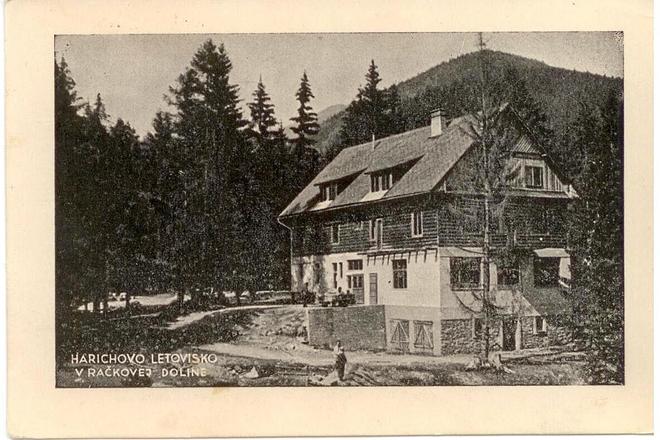Tourists began visiting the Western Tatras much later than the High Tatras. The western part of the mountain range was not so easily accessible – the central part of the Tatras was much easier to reach from the railway station in Poprad.
Moreover, in the last 30 years of the 19th century, numerous spa and tourist centres sprouted up in the central High Tatras, such as Smokovce, Tatranská Lomnica and Štrbské Pleso.
While guests from the entire monarchy swarmed well-equipped hotels in the High Tatras, forests to the west of them were usually visited only by shepherds or lumberjacks – and only occasionally an enthusiastic hiker. But even if a hiker ventured west, he had nowhere to stay overnight, as at the turn of the 19th and 20th centuries, there were almost no cottages or mountain chalets in the area. Only in the 1920s did tourists start to come to this area in greater numbers.
The promising start of tourism was dramatically disrupted during the years of the Second World War. Conflicts flared in this area and most chalets were used by insurgents fighting against fascist Germany. Later, the German units gradually occupied all of Slovakia, and burnt almost all of the chalets in the process.
One exception is the chalet in this postcard, built by Ján Harich of Pribylina in 1942. The thriving hotel miraculously survived the war. Harich Resort, or Harichovo Letovisko, was unusually big for local conditions. As many as 50 people could stay there.
Ján Harich lost his resort in 1949 during nationalisation though the building further served the public - but under different names. First it was a convalescent home of trade unions, and then a school and recreation centre of Janko Kráľ. Later it became the Odbojár (Unionist) chalet, Mihuľa chalet – and is now called Orešnica. This postcard of Harich Resort dates back to 1948, when he still owned it.
This article was originally published by The Slovak Spectator on December 15, 2014. It has been updated to be relevant today.

